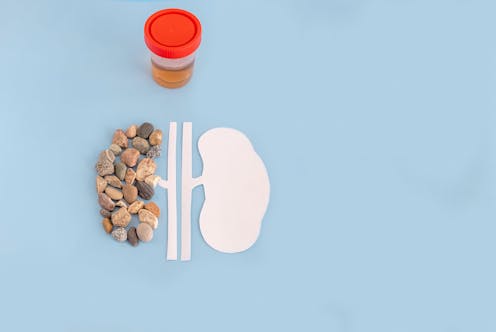Of all the body’s amazing abilities, perhaps one of the strangest is its capacity to make stones. Many will have heard of kidney or gallstones , and be aware of the problems they can cause. But there are other, rarer types of stone in the body that can be found in the most unlikely places.
What are these body stones are made of? And what can we do to prevent them? Kidney stones affect around one in ten people. They develop from mostly calcium and oxalate that is filtered from blood into our urine. ( Oxalates are naturally occurring compounds found in both plants and humans.

) In larger amounts, the oxalate and calcium can crystallise and collect together to form a stone. Kidney stones can vary considerably in size – from less than a millimetre across to centimetres or more . They can also form unusual shapes – if the stone builds up within the branching channels (calyces) of the kidney, it can take on the form of a deer’s antler.
This is called a staghorn calculus . These stones cause issues when they obstruct the ureters – the two tubes that transport urine from the kidneys to the bladder. If this happens, it can cause severe pain in the loins, as well as preventing normal urinary flow.
This in turn can cause an infection, or urine accumulating in and around the kidney . Another common condition is gallstones. These form inside either the gallbladder, or the biliary tree – the duct system that delivers bile to the gut to help break down fats.
Gallstones form from .























